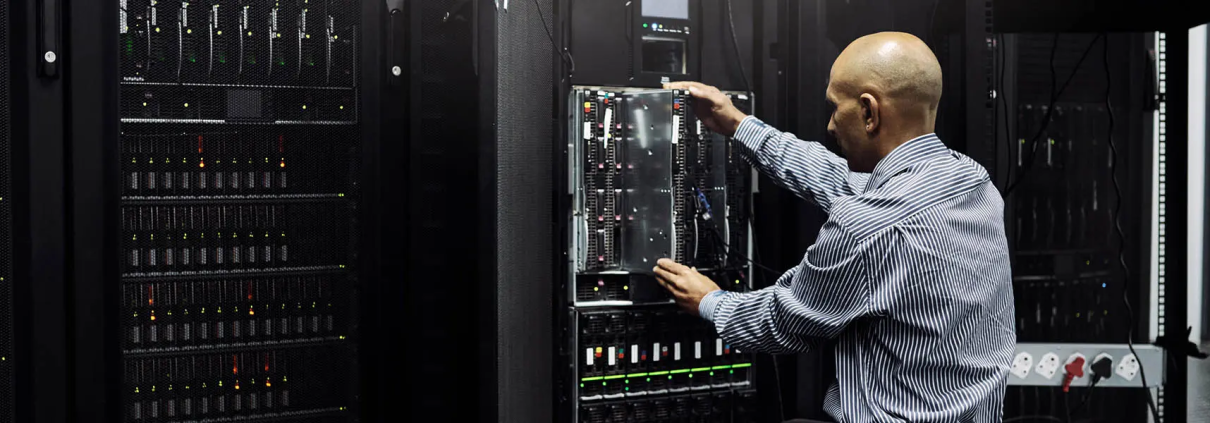Data Center Power Systems: Ensuring Reliable and Continuous Operation
Data centers are the backbone of the modern digital economy, hosting critical applications, cloud services, and enterprise infrastructure. Their uninterrupted operation is paramount, and any downtime can result in significant financial losses, reputational damage, and operational disruptions. Understanding the architecture of data center power systems is essential for operators, engineers, and decision-makers who want to ensure reliability, efficiency, and scalability.
This article provides a comprehensive overview of data center power systems, covering the main power supply, redundancy strategies, backup solutions, and energy management. It also introduces rapid-response UPS solutions as a critical component for maintaining uptime during unexpected power disturbances.
- Introduction: Why Reliable Power Matters
Data centers rely on continuous electrical power to support thousands of servers, networking equipment, storage arrays, and cooling systems. Even brief interruptions can cause:
- Service downtime affecting clients and end-users
- Data corruption or loss
- Potential hardware damage due to sudden voltage drops or surges
Ensuring a reliable power supply requires a carefully designed system that integrates multiple layers of protection, monitoring, and redundancy.
- Overview of Data Center Power Systems
A robust data center power system typically consists of several interdependent components:
Main Power Supply
Most data centers connect directly to utility power grids, often with dual feeds for redundancy. High-availability centers may also include on-site generators to mitigate grid instability.
Redundancy Design
Redundancy strategies such as N+1, N+2, or fully fault-tolerant Tier designs ensure that if one component fails, others can seamlessly maintain operation. These designs are critical for meeting reliability standards and Service Level Agreements (SLAs).
Power Distribution Units (PDUs)
PDUs distribute power from the main supply or UPS to racks and individual devices, often with monitoring capabilities for load balancing, efficiency, and fault detection.
This layered architecture forms the foundation for stable, predictable operation, reducing the risk of unexpected outages.
- Uninterruptible Power Supply (UPS) and Rapid-Response Backup
While the main power supply and redundancy reduce the risk of downtime, sudden outages or voltage fluctuations can still occur. Uninterruptible Power Supply (UPS) systems are designed to bridge this gap.
- Primary Role: Provide immediate power to critical loads during grid interruptions, preventing shutdowns or performance degradation.
- Types: Online double-conversion, line-interactive, and standby UPS units serve different performance and efficiency requirements.
For data centers requiring instantaneous backup, rapid-response UPS systems can ensure zero downtime for essential servers and networking equipment. These systems activate in milliseconds, supplying stable power until generators or the main grid resume operation.
For operators seeking reliable and fast backup solutions, our UPS Batteries offer high performance, long lifecycle, and seamless integration with existing infrastructure.
By integrating such systems, data centers can protect mission-critical loads, reduce the risk of data loss, and comply with Tier-rated reliability standards.
- Backup Generators and Integration
While UPS units handle immediate power interruptions, backup generators provide longer-duration support during extended outages. Integration between UPS and generators is crucial:
- UPS first: Handles the immediate power gap within milliseconds
- Generators second: Take over sustained power delivery, allowing the UPS to maintain a stable transition
- Coordination: Automated transfer switches and monitoring systems ensure smooth, uninterrupted operation
This combination of UPS and generators allows data centers to maintain continuous operation, even during severe grid disruptions.
- Monitoring, Management, and Energy Efficiency
Modern data centers employ sophisticated monitoring and management systems to optimize power usage and ensure reliability:
- Energy Efficiency (PUE): Measuring power usage effectiveness helps identify opportunities to reduce waste and improve overall system efficiency
- Load Balancing: Intelligent distribution of power across racks and devices prevents overloads
- Predictive Maintenance: Monitoring battery health, UPS performance, and generator readiness reduces the risk of unexpected failures
- Automation: Integrated control systems can respond to faults automatically, minimizing manual intervention and response time
These strategies ensure that data center power systems are not only reliable but also cost-effective and environmentally responsible.
- Practical Considerations for Data Center Operators
When designing or upgrading a data center power system, operators should consider:
- Critical vs. non-critical loads: Determine which equipment requires instantaneous backup and which can tolerate brief interruptions
- Redundancy planning: Choose N+1, N+2, or Tier-rated architectures based on uptime requirements
- Integration of UPS and generators: Ensure coordination for seamless power transfer
- Scalability: Design systems that can accommodate future expansion without compromising reliability
By following these best practices, operators can build resilient data centers capable of maintaining continuous operation under a wide range of conditions.
- Conclusion
Data center power systems are complex, multi-layered architectures that combine utility feeds, redundancy, PDUs, UPS units, and backup generators. Each component plays a vital role in ensuring uptime, protecting equipment, and maintaining data integrity.
While the main focus remains on the overall power system, rapid-response UPS solutions play a critical role in bridging the gap during power interruptions, providing instant support to key loads. Operators can explore these solutions further via our UPS Batteries page to see how they integrate into modern data center architectures.
🔗 Recommended Reading
- Top Data Center Power Solutions: UPS, Batteries, Generators & More
A broad overview of data center power solutions, covering UPS, battery systems, and generator integration. - Data Center Power Management: Ensuring Reliable and Efficient Power for Critical Infrastructure
In-depth discussion on monitoring, energy efficiency, and automated management strategies for modern data centers.
By understanding the interplay between main power, redundancy, and backup systems, data center operators can confidently design and maintain infrastructure that ensures uninterrupted service, operational efficiency, and long-term reliability.


